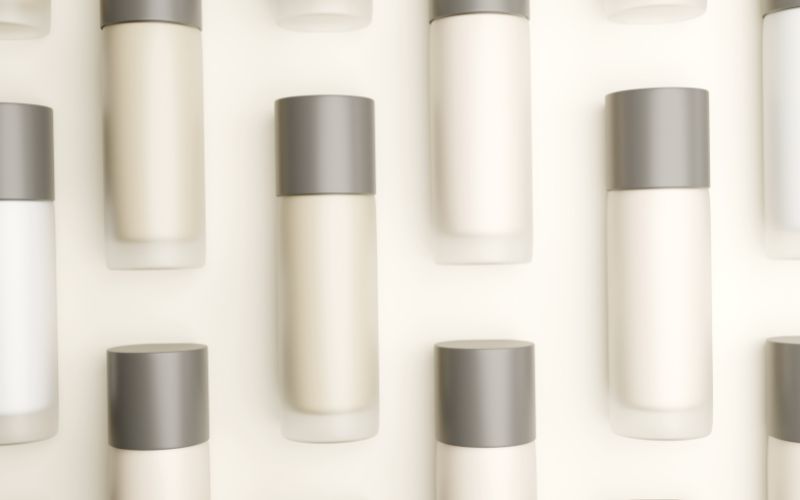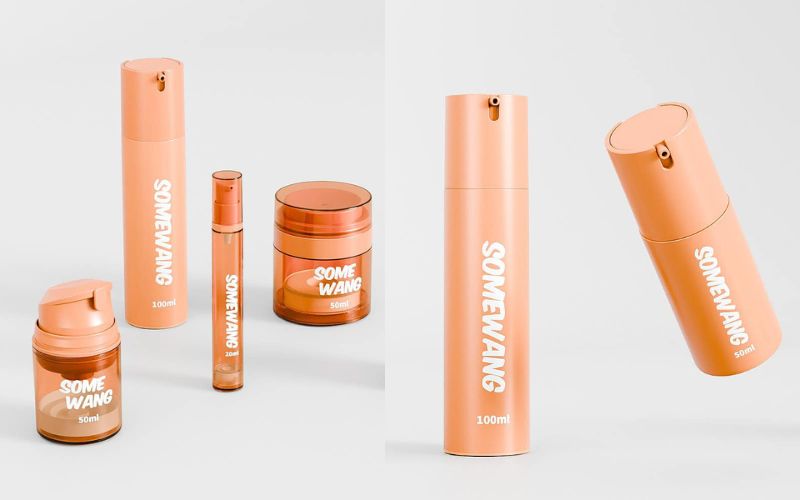
What is Airless Pump Technology?
Airless pump technology works by creating a vacuum seal that keeps air completely separate from the product inside the bottle.
The system uses a piston or disc that moves upward as product gets dispensed, maintaining constant pressure without letting any outside air enter the container.
How Airless Pumps Eliminate Air Exposure
Airless pump bottle is designed as a completely closed system from start to finish which eliminate air exposure by combining a piston-driven inner structure, positive displacement dispensing, airtight seals, and barrier materials—creating a closed system where product and air never meet.
Vacuum System and Piston Mechanics
The vacuum system is the heart of how airless pumps work.
A disc or piston sits at the bottom of the bottle and creates upward pressure as the product gets used.
Each time the pump gets pressed, it removes a small amount of product from the top.
This creates a pressure difference inside the bottle.
The piston responds by moving up from the base, pushing the remaining product toward the dispensing area.
The piston travels upward in a controlled way, maintaining even pressure throughout the bottle’s lifetime.
This ensures consistent dispensing from the first pump to the last.
No air fills the empty space because the piston takes up that room instead.
Differences Between Airless and Traditional Pump Bottles
Traditional pump bottles rely on a dip tube that reaches down into the product.
Key Differences:
- Product evacuation: Traditional bottles often leave 15-25% of product stuck at the bottom, while airless systems dispense 95-99% of contents
- Contamination risk: Traditional pumps allow air and bacteria inside; airless designs keep everything sealed
- Dispensing consistency: Airless pumps deliver the same amount each time, while traditional pumps can vary
The vacuum technology in airless bottles also means they work at any angle.
Traditional bottles need to stay upright for the dip tube to function properly.
Cosmetic Airless Bottles and Airless Packaging
Airless packaging comes in several forms to meet different product needs.
The three main types serve various cosmetic packaging applications.
Piston systems are the most common for skincare products.
This design works well for creams, serums, and lotions.
Bag-in-bottle designs place a collapsible pouch inside the container.
The bag folds in on itself as product leaves, preventing any air contact.
This option suits both bottles and jars.
Bag-on-valve systems use aluminum or specialized plastic containers with a foil pouch inside.
Propellant surrounds the pouch and pushes product out when activated.
These work for spray applications.
Most Used Airless Pump Material
Most airless pump bottles use polypropylene (PP) as their primary material.
This plastic offers several advantages for cosmetic packaging.
PP resists chemicals well, which means it won’t react with skincare formulas.
It’s also lightweight and durable, protecting products during shipping.
The material can be molded into various shapes and sizes to fit different brand needs.
From a sustainability standpoint, polypropylene is recyclable through most municipal programs.
It carries the #5 recycling symbol.
Glass airless bottles provide another eco-friendly packaging option.
However, glass costs more and weighs more than plastic alternatives.
Benefits of Airless Pump for Cosmetics Products
Product Preservation and Shelf Life
Airless pump bottles create a vacuum seal that keeps air out of the container.
Without air exposure, skincare products and cosmetics stay fresh much longer than they would in traditional packaging.
The vacuum system stops bacteria and other contaminants from entering the bottle.
Formulas stay potent for extended periods because oxidation cannot break down the ingredients.
Protection of Active Ingredients
Active ingredients in cosmetic formulations lose their effectiveness when exposed to air and light.
Airless pump technology shields these sensitive components from degradation.
Ingredients like vitamin C, retinol, and peptides break down quickly in regular bottles. However, with less air exposure, products naturally resist contamination.
Precise and Hygienic Dispensing Process
The dispensing process with airless pumps delivers the same amount of product every time.
Users get consistent portions without guessing or over-pouring.
This controlled release helps products last longer and prevents waste.
Each pump keeps the remaining product sealed from outside contact.
This hygienic system matters especially for eye creams and facial serums where contamination poses greater risks.
Packaging Solution in the Beauty Industry

- Anti-aging serums and treatments
- Vitamin C and antioxidant formulations
- Moisturizers and face creams
- BB creams and foundations
- Eye creams and treatments
- Sunscreens and SPF products
- Natural and organic skincare products
